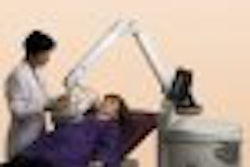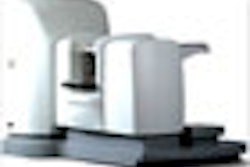Modern-day ultrasound research relies too heavily on case descriptions and technical details to be of any real value to the medical community, according to Dr. Bruce Hillman, the chairman of the American College of Radiology Imaging Network (ACRIN). Hillman, who is also a professor at the University of Virginia in Charlottesville, suggested ways in which sonography investigators can make their work more relevant.
"We continue to be describers," Hillman said in a presentation at the 2006 Society of Radiologists in Ultrasound (SRU) meeting in San Francisco. By "describers," Hillman explained that published papers tend to chronicle the minutiae of imaging technology -- while also presenting select cases that are bound to have a favorable outcome -- but fail to answer a more far-reaching question: "How does technology operate to improve patient health?"
The answer to that query is particularly crucial in the current healthcare environment, which emphasizes value in the form of the cost-to-benefit ratio of a particular test. It's estimated that the U.S. will spend $2 trillion on healthcare in 2006, and that 30% of this figure will be wasted on unnecessary exams, so Hillman stressed that "we cannot continue to spend unless there is going to be a reasonable return on the investment."
Hillman outlined the four pillars of sound clinical research:
- Pertinence
- Validity
- Reliability
- How generalizable is the information?
Whether a study is unidisciplinary or multidisciplinary speaks to pertinence, he explained. A valid study should be mostly free of selection bias and subject to statistical testing. Reliability indicates that if others used the same methods, they would achieve the same results. Finally, is the study design general enough that other practices could apply them as well, he asked.
In addition, Hillman broke down the various types of research that is currently done, listing them from least useful to most useful:
- Physical description and technical notes
- Case reports with no scientific design at outset
- Inherently biased so that the results are more optimistic than reality
- Studies that look at diagnostic accuracy but not the impact on patients
- Studies that affect diagnosis and treatment of the patient
- Cost-effectiveness
Hillman said he reviewed six month worth of articles in the Journal of Ultrasound in Medicine during 2005 and found lackluster results. The criteria he looked for included original research, whether the study was prospective or retrospective, if it was from a single institution or multiple institutions, and how the study was funded.
According to his research, he found 55 studies that constituted original research. The majority was retrospective. Thirty-two out of 55 were made up of a series of case descriptions. There were no multi-institutional studies and only three were supported by an extramural grant. Overall, Hillman reported that he found a poor adherence to a specific hypothesis and a sufficient description of technology, but not of the patient sample. In addition, most of the cases cited seemed like samples of convenience.
On the issue of multicenter trials, he pointed out that only one current study (ACRN 6666) featured ultrasound as the main technology. That study is driven by breast imagers, not ultrasound experts, he said.
Hillman acknowledged a number of barriers radiologists are up against when conducting research that meets the four pillars -- and a major one is money. In fiscal year 2005, the National Cancer Institute gave $53 million to fund nuclear medicine research in cancer imaging versus $15 million for ultrasound investigations, he said.
Also, radiologists are not trained as critical thinkers and are faced with suboptimal research education opportunities and resources, insufficient rewards, and poor recognition for collaborative efforts, Hillman added.
But steps can be taken to strengthen imaging, he said. First, quality needs to be stressed over quantity. Returning to the issue of patient care, investigators need to ask themselves how meaningful a particular imaging will be to patients and how it will directly affect their care?
The ultrasound community as a whole should work toward improving research opportunities, with fellowships, substantial prizes and grants for young researchers, and participation in programs such as ACRIN. Finally, ultrasound specialists need to cultivate an interest in functional and molecular imaging.
"Most of what I've heard about at this (SRU) meeting is anatomic ultrasound," Hillman said. "That's not where the rest of medical research is heading."
Two SRU attendees defended imaging research. Dr. Barry Goldberg from Thomas Jefferson University in Philadelphia said that the current lack of approval for widespread use of ultrasound contrast agent has put a stranglehold on molecular imaging research opportunities.
Dr. Beryl Benacerraf from Harvard Medical School in Boston serves as the editor in chief for JUM. She pointed out that she can only publish what they are given as many investigators prefer to send their work to general imaging journals, such as Radiology and the American Journal of Roentgenology.
In an e-mail to AuntMinnie.com, Hillman speculated that wider reach and greater "prestige" is associated with publishing in general imaging journals versus one that is modality specific. He also noted that, historically, the best radiology research has been published in major medical journals, such as the Journal of the American Medical Association. However, "most radiology research does not qualify for publication in these (major medical journals)," he wrote.
While other specialties are far from perfect, Hillman cited cardiology, oncology, and infectious disease as disciplines that are doing a better job of upholding the four pillars of research.
By Shalmali Pal
AuntMinnie.com staff writer
November 13, 2006
Related Reading
Imaging's big future gets smaller, July 3, 2006
Publishers mobilize against U.S. research proposal, May 10, 2006
NIH-sponsored clinical trials worth the cost, April 21, 2006
Imaging poised to transform the future of medicine, February 2, 2006
Copyright © 2006 AuntMinnie.com



















